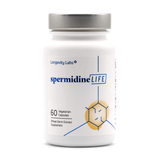
Our body is a complicated machine. There are thousands of bodily functions that help keep this intricate system fully functional. One of these processes is known as cellular senescence. Today’s article will go over cellular senescence, how it compares to autophagy, how fasting can induce both processes, senescent cells and fasting, senescent cells removal naturally, and the benefits of cellular senescence.
The Role of Autophagy and Cellular Senescence
Both autophagy and cellular senescence are important bodily functions that impact our cellular health as we age. While researchers are certain that these processes play a very important role, the scope of their impact is still uncertain. While these two processes may not be directly related, researchers have discovered interesting correlations between the two.
For example, it is known that elevated levels of autophagy induce cell death, while inadequate autophagy can trigger cellular senescence. Both bodily functions help fight diseases such as aging, renal degeneration, neurodegenerative disorders, and cancer. Before continuing this article, it’s important to note that research into autophagy and cellular senescence is still in its infancy. Further research is required for us to understand the two processes better.
What are Senescent Cells?
Cellular senescence is a very complex process. During this process, cells become senescent, which means it’s in a permanent state of cell-cycle arrest. This process is typically caused by stress and damage from exogenous and endogenous sources. These responses range from complete recovery to cell death.
Part of what makes cellular senescence so complicated is that it has its benefits and its drawbacks. Researchers are currently trying to discover the perfect balance between too many and too few senescent cells. As research in the field progresses, we will better understand how cellular senescence can help improve our cellular health as well as our longevity.
Why Are Senescent Cells Sometimes Called Zombie Cells?
Senescent cells are also often referred to as zombie cells. Remember, during the senescence process, cells become stuck in a permanent state of arrest. This can be beneficial when the body is responding to damage. However, as we age, our immune system weakens. This allows an excess of senescent cells to build, leading to inflammation and other age-related diseases.
Certain health conditions have been tied to an increase in zombie cells. For example, researchers believe obesity increases senescence and diminishes the function of fat-tissue-derived mesenchymal stem cells. Obesity can limit stem cells’ vigor and ability, which causes tissue damage and organ injury, which induces cellular senescence.
Can And Should You Rid Your Body Of Senescent Cells?
Too many senescent cells can lead to inflammation and other age-related health defects. Therefore, removing these cells may seem beneficial, especially as we age. That’s why researchers have worked to develop drugs known as senolytics to remove these zombie cells. Animal studies have shown that this process can improve overall wellbeing and longevity.
However, some researchers advise against senolytic, as cellular senescence is an essential bodily function that is a response to aging. Another concern researchers have is that certain cell populations, such as heart cells and T cells, do not replace themselves. Therefore, even if they’re zombie cells, removing these cells can cause more harm than good in the long run.
Can Senescent Cells Be Eliminated With Intermittent Fasting?
Does fasting get rid of senescent cells? Researchers believe that there may be a direct correlation between fasting and senescent cells. This is because fasting can help induce autophagy. Remember, during autophagy, the body removes damaged cells and proteins, which include zombie cells.
During a fast, you’re essentially starving out the zombie cells. Therefore if you’re wondering does fasting kill zombie cells, it can be quite effective. During the autophagy process, your body will replace these cells with newer, healthier cells. By doing so, you can reduce inflammation, lower your cancer risk, and potentially improve your longevity.
Does Quercetin Cause Senescent Cell Death?
While senescent cells can be a good thing, too many could promote tumor growth. Fortunately, recent studies point towards nanoparticles coated with quercetin molecules targeting these harmful senescent cells. Quercetin is a plant flavonol from the flavonoid group of polyphenols. It has poor water solubility, chemical instability, and poor bioavailability. Because of this, high doses of quercetin are required to have a significant effect.
It is commonly sold and used to reduce inflammation and as an antioxidant. When paired with dasatinib, animal research shows that quercetin can be the basis for effective therapy for eliminating senescent cells. When used by itself, however, quercetin does not appear to have any significant senolytic effect.
Can Senescent Cells Cause Cancer?
Senescent cells are very complicated. A big reason for this is its paradoxical role in fighting cancer. On the one hand, cellular senescence can place cancerous cells in a permanent state of cellular arrest. This can help slow the growth of tumors and even remove them entirely. On the other hand, too many senescent cells can create an environment that promotes the growth of cancerous cells.
How Supplements Can Benefit Your Health
Positive cellular health is one of the pillars of longevity and overall well being. Researchers believe that cellular senescence plays a big role in promoting positive cellular health. Autophagy can also help promote positive cellular health. A diet rich in spermidine can help induce this process. Unfortunately, most Americans fail to get their recommended daily dose of spermidine through their diet. That’s why our team at spermidineLIFE® has created the world’s first award-winning spermidine supplement. This supplement is designed to help you get your recommended dose of spermidine.







